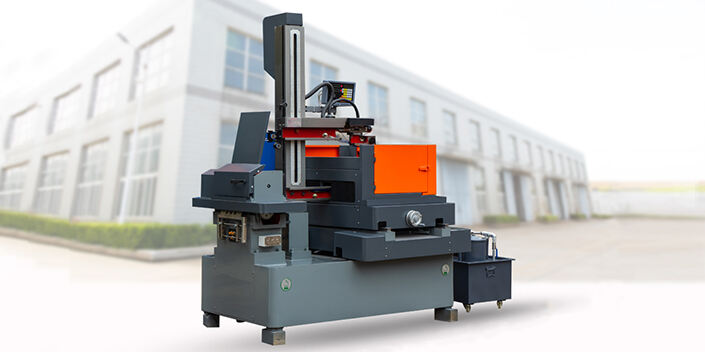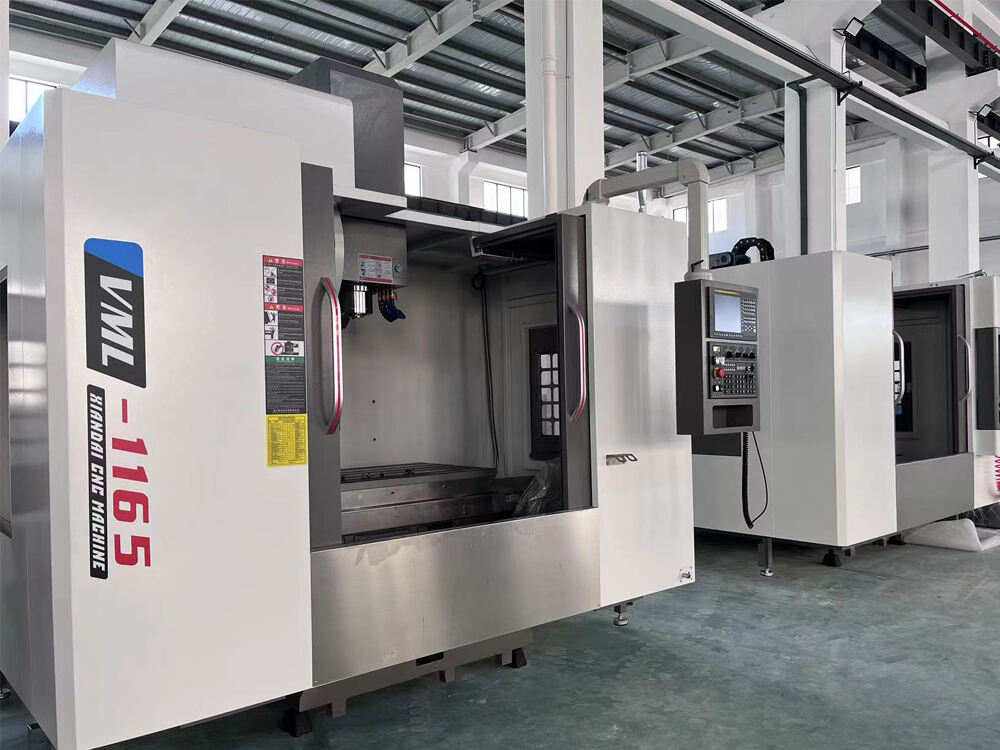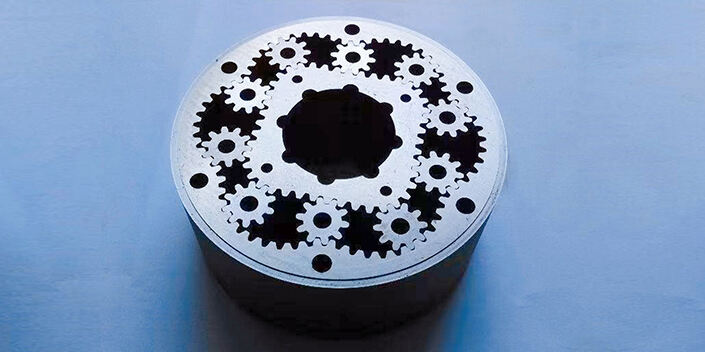How EDM Wire Cutting Machines Work: The Science Behind Electrical Discharge Machining
EDM wire cutting machines use controlled electrical sparks between a thin wire electrode and a conductive workpiece to remove material through thermal erosion. This non-contact process enables high-precision cuts in complex geometries, even in hardened or exotic materials.
Electrical Discharge Machining Working Principle and EDM Sparking Mechanism
There's usually a tiny space left between the cutting wire and what needs to be shaped, and this space gets filled with special deionized water acting as insulation. Apply some electricity across that gap and watch what happens next - tiny electrical sparks jump around creating heat that can reach almost 12,000 degrees Celsius! This intense heat basically boils away tiny bits of metal from the surface. The sparks happen super fast, like thousands every single second, and modern computer controlled machines steer them exactly where they need to go. What makes this method so cool? It cuts through materials without actually touching them, which means no wear and tear on tools during the process.
Thermal Erosion Through Controlled Electrical Discharges in Wire EDM
Each spark melts a tiny area of the workpiece, with heat rapidly dissipated by the surrounding dielectric fluid. By adjusting pulse duration, current, and voltage, operators can balance cutting speed and surface quality. Since there is no physical contact, tool wear is minimal, preserving accuracy over extended operations.
Role of Dielectric Fluid (Deionized Water) in Heat Dissipation and Particle Removal
Deionized water serves as both coolant and insulator. It quenches each spark to prevent overheating, flushes away eroded particles, and maintains stable electrical conditions in the gap. Continuous filtration ensures consistent performance, which is essential for achieving tight tolerances and smooth finishes.
Core Components and CNC Technology in EDM Wire Cutting Machines
Key Components: Power Supply, Wire Feed System, Worktable, and Precision Guides
Wire EDM machines today depend on four main components working together. First off, there's the power supply which sends out controlled electrical sparks ranging between around 50 volts to 300 volts. These sparks happen in short bursts lasting anywhere from 2 microseconds to as long as 200 microseconds, fine tuning how much energy gets transferred during cutting. Next comes the wire feeding mechanism that pushes through either plain brass or specially coated wires measuring roughly 0.05 millimeters all the way up to 0.35 millimeters thick. The machine feeds these wires at speeds somewhere between 6 meters per minute and 12 meters per minute, keeping the tension tight but not too tight, usually within about plus or minus 0.2 Newtons so the wire doesn't bend or warp mid cut. For stability, manufacturers often install granite tables because they absorb vibrations well. And finally, those super accurate guiding systems with built in linear encoders can position things with incredible precision, getting within just one micrometer across distances of up to half a meter.
CNC Control and Multi-Axis Movement (X, Y, Z, U, V) for Complex Geometries and Taper Cutting
Modern 5 axis CNC machines can turn those CAD designs into extremely accurate cutting paths down to about 0.1 microns of precision. These systems handle multiple axes at once X, Y plus the upper U and V guides which makes it possible to cut tapers at angles as steep as plus or minus 30 degrees. This capability is really important when making things like injection molds or parts for airplanes where tight tolerances matter a lot. The real game changer though comes from the adaptive feed control feature. It constantly adjusts how far the wire moves away from the workpiece based on what it sees with spark detection sensors. Manufacturers report around an 18 percent reduction in machining time for titanium components when using this smart system instead of old school fixed parameter settings.
Recent Advancements: Thinner Wires, Automation, and Intelligent Process Monitoring
Using 0.03 mm tungsten core wires makes it possible to achieve those tiny corner radii under 0.005 mm that are so crucial in microtooling applications. Most shops have automated wire threaders these days which let machines run overnight with pretty good reliability around 98%. And don't forget about those multispectral sensors keeping an eye on dielectric fluid quality right down to 15 parts per million of debris. Pretty impressive stuff actually. The latest systems even incorporate machine learning to spot potential wire breaks before they happen. These smart algorithms analyze things like tension levels, power consumption patterns, and past performance data to predict problems with about 92% accuracy. This means operators can make adjustments ahead of time instead of dealing with costly interruptions later on.
Precision, Surface Finish, and Performance Trade-offs in Wire EDM Operations
Achieving Micron-Level Tolerances with EDM Wire Cutting Machine Accuracy
Today’s wire EDM systems achieve dimensional accuracies within ±0.002 mm, making them suitable for mission-critical components like fuel-injection nozzles and turbine blades—where deviations beyond 5 µm can lead to failure. A 2023 study by Fathom Manufacturing demonstrated these results on Inconel 718 using multi-pass strategies with 0.05 mm brass wire.
Optimizing Surface Roughness (Ra) for High-Quality Finishes in Precision Manufacturing
The surface finish achieved really hinges on two main factors: the discharge energy used and how the wire moves during cutting. When manufacturers cut back the current setting from 12 amps down to just 6 amps while also boosting wire tension around 20%, they typically see a dramatic improvement in roughness average (Ra) values. On carbide dies, this adjustment can bring Ra values down from about 1.8 micrometers all the way to 0.6 micrometers. Optical mold makers who need finishes below 0.4 micrometers often find that making 3 to 5 skim passes using 0.02 mm coated wires gets them there without any additional polishing work. Sure, cutting speeds drop by roughly 35% with this approach, but many shops consider it worth the tradeoff for those ultra-smooth surfaces required in precision applications.
Balancing Material Removal Rate (MRR) with Cutting Speed and Precision
Operators must navigate trade-offs among productivity, accuracy, and finish:
| Parameter | High MRR Mode | Balanced Mode | Precision Mode |
|---|---|---|---|
| Cutting Speed | 8 mm²/min | 5 mm²/min | 2 mm²/min |
| Power Setting | 120V/15A | 100V/10A | 80V/6A |
| Surface Roughness Ra | 2.8µm | 1.2µm | 0.6µm |
| Dimensional Tolerance | ±0.02mm | ±0.008mm | ±0.003mm |
For thick (>50 mm) hardened tool steel, switching from high-MRR to precision mode after 80% material removal optimizes both throughput and final accuracy.
Understanding the Trade-off Between Cutting Speed and Dimensional Accuracy
Excessive feed rates degrade positional accuracy. Trials show titanium parts cut at 10 mm/min exhibit 0.018 mm errors versus 0.005 mm at 6 mm/min. This effect worsens in thermally resistant materials, necessitating adaptive controls that adjust speed based on real-time spark gap feedback.
Materials and Design Considerations for Effective Use of EDM Wire Cutting Machine
Conductive materials compatible with wire EDM: Steel, carbide, aluminum, and exotic alloys
Wire EDM works best with materials that conduct electricity well. Most shops work with tool steels, tungsten carbide, various aluminum alloys, plus specialty metals such as titanium and Inconel which are everywhere in aircraft manufacturing. According to Advanced Manufacturing Journal from last year, these materials make up roughly three quarters of all industrial EDM operations. When it comes to precision work, manufacturers have found that cobalt bonded tungsten carbide holds its shape remarkably well during complex cutting processes, typically staying within about half a micrometer per millimeter tolerance. This level of accuracy matters a lot when making parts where even tiny deviations can cause problems down the line.
Design guidelines: Geometry, tolerances, surface finish, and material thickness
To maximize effectiveness:
- Maintain wall thickness ≥1.5– wire diameter to reduce vibration risks
- Specify ±5 µm positional tolerances for most commercial applications
- Design internal corner radii ≥0.15 mm to match standard wire sizes Material thickness under 300 mm ensures effective dielectric flushing while supporting cutting speeds of 15–25 mm²/min in hardened steel.
Types of EDM wires: Brass, coated, and tungsten—properties and performance impact
| Wire Type | Diameter (mm) | Tensile Strength (N/mm²) | Surface Roughness (Ra) |
|---|---|---|---|
| Brass | 0.10–0.30 | 500–900 | 0.8–1.2 µm |
| Zinc-coated | 0.07–0.25 | 600–1,200 | 0.4–0.7 µm |
| Tungsten | 0.02–0.10 | 3,000–3,500 | 0.1–0.3 µm |
Brass wires remain cost-effective for general use, while tungsten enables micro-cutting of medical implants with ≤2 µm feature resolution. Coated wires boost cutting speeds by 25–40% in automotive mold production due to improved spark stability.
Industrial Applications and Strategic Advantages of EDM Wire Cutting Machines
Critical Applications in Aerospace, Medical Devices, and Automotive Industries
In aerospace, wire EDM shapes turbine blades from nickel-based superalloys capable of withstanding 1,200°C. Medical manufacturers produce surgical tools with Ra 0.2 µm finishes—critical for infection control. Automotive suppliers use it for fuel injector nozzles requiring ±3 µm accuracy, outperforming milling in hard materials.
Case Study: Precision Mold Making Using Wire EDM in the Automotive Sector
A European auto supplier reduced mold production time by 37% using wire EDM for gearbox component molds. The process achieved <0.005 mm tolerances in hardened D2 steel (60 HRC), eliminating post-machining polishing and saving $220k annually (Automotive Manufacturing Quarterly 2023).
Trend: Growing Use of Wire EDM for Biocompatible Alloys in Medical Manufacturing
Adoption rose 41% in medical device manufacturing (2024 Advanced Manufacturing Report) due to its ability to cut titanium and cobalt-chrome without heat-affected zones. Producers create orthopedic implants with 0.1 mm cooling channels while meeting ISO 13485 surface integrity standards—unachievable with laser methods.
Strategic Benefits: No Mechanical Stress, Minimal Distortion, and Cost-Effective Precision
The non-contact nature prevents deformation in delicate parts like 0.3 mm pacemaker connectors. Using 5-axis control and Ø0.03 mm tungsten wires, shops achieve 94% material utilization in $850/kg biocompatible alloys, far exceeding the 72% typical of conventional machining.
Integrating Wire EDM Into Hybrid Manufacturing Workflows for Maximum Efficiency
Leading manufacturers integrate wire EDM with CNC milling in hybrid cells sharing automated pallet systems. This approach reduces lead times for complex injection molds by 52% compared to standalone processes (Journal of Advanced Manufacturing Systems 2024).
FAQ
What is EDM wire cutting used for?
EDM wire cutting is used for high-precision cutting of complex geometries, especially in conductive and hard materials such as steel, carbide, aluminum, and exotic alloys used in aerospace, medical devices, and automotive industries.
How does EDM wire cutting compare to traditional cutting methods?
EDM wire cutting offers non-contact cutting, allowing for detailed precision without tool wear, and is ideal for materials where traditional methods would cause deformation or require subsequent polishing.
Can EDM wire cutting machines handle automated operations?
Yes, modern EDM wire cutting machines are often equipped with automated wire threaders and intelligent process monitoring to enable unmanned overnight operations with high reliability.
What recent advancements have been made in EDM wire cutting technology?
Recent advancements include the use of thinner wires for finer precision, automation technologies, and intelligent process monitoring that utilizes machine learning to predict and prevent wear or breakages.
Table of Contents
- How EDM Wire Cutting Machines Work: The Science Behind Electrical Discharge Machining
- Core Components and CNC Technology in EDM Wire Cutting Machines
-
Precision, Surface Finish, and Performance Trade-offs in Wire EDM Operations
- Achieving Micron-Level Tolerances with EDM Wire Cutting Machine Accuracy
- Optimizing Surface Roughness (Ra) for High-Quality Finishes in Precision Manufacturing
- Balancing Material Removal Rate (MRR) with Cutting Speed and Precision
- Understanding the Trade-off Between Cutting Speed and Dimensional Accuracy
- Materials and Design Considerations for Effective Use of EDM Wire Cutting Machine
-
Industrial Applications and Strategic Advantages of EDM Wire Cutting Machines
- Critical Applications in Aerospace, Medical Devices, and Automotive Industries
- Case Study: Precision Mold Making Using Wire EDM in the Automotive Sector
- Trend: Growing Use of Wire EDM for Biocompatible Alloys in Medical Manufacturing
- Strategic Benefits: No Mechanical Stress, Minimal Distortion, and Cost-Effective Precision
- Integrating Wire EDM Into Hybrid Manufacturing Workflows for Maximum Efficiency
- FAQ





